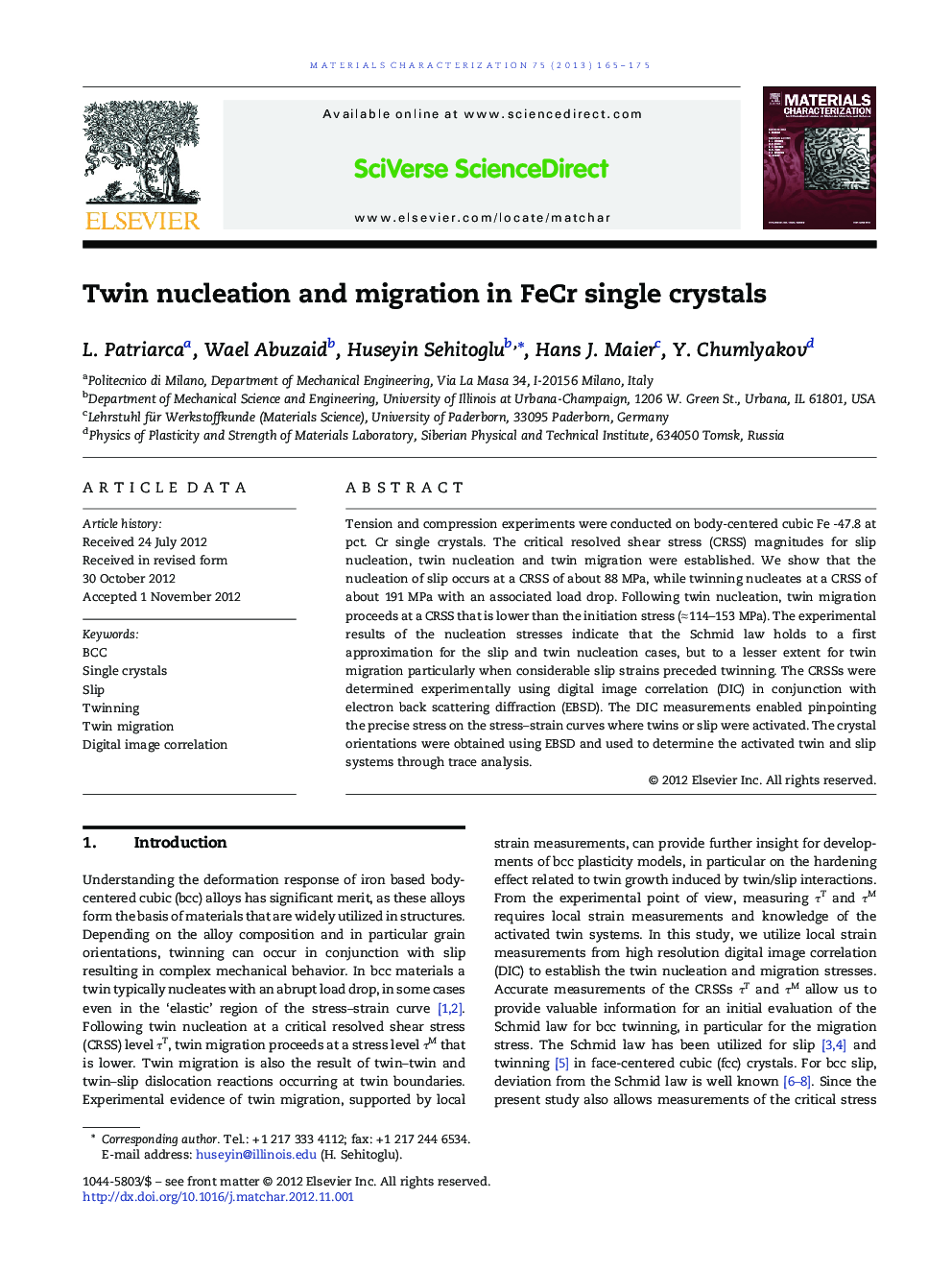| Article ID | Journal | Published Year | Pages | File Type |
|---|---|---|---|---|
| 1571299 | Materials Characterization | 2013 | 11 Pages |
Tension and compression experiments were conducted on body-centered cubic Fe -47.8 at pct. Cr single crystals. The critical resolved shear stress (CRSS) magnitudes for slip nucleation, twin nucleation and twin migration were established. We show that the nucleation of slip occurs at a CRSS of about 88 MPa, while twinning nucleates at a CRSS of about 191 MPa with an associated load drop. Following twin nucleation, twin migration proceeds at a CRSS that is lower than the initiation stress (≈ 114–153 MPa). The experimental results of the nucleation stresses indicate that the Schmid law holds to a first approximation for the slip and twin nucleation cases, but to a lesser extent for twin migration particularly when considerable slip strains preceded twinning. The CRSSs were determined experimentally using digital image correlation (DIC) in conjunction with electron back scattering diffraction (EBSD). The DIC measurements enabled pinpointing the precise stress on the stress–strain curves where twins or slip were activated. The crystal orientations were obtained using EBSD and used to determine the activated twin and slip systems through trace analysis.
► Digital image correlation allows to capture slip/twin initiation for bcc FeCr. ► Crystal orientations from EBSD allow slip/twin system indexing. ► Nucleation of slip always precedes twinning. ► Twin growth is sustained with a lower stress than required for nucleation. ► Twin-slip interactions provide high hardening at the onset of plasticity.
